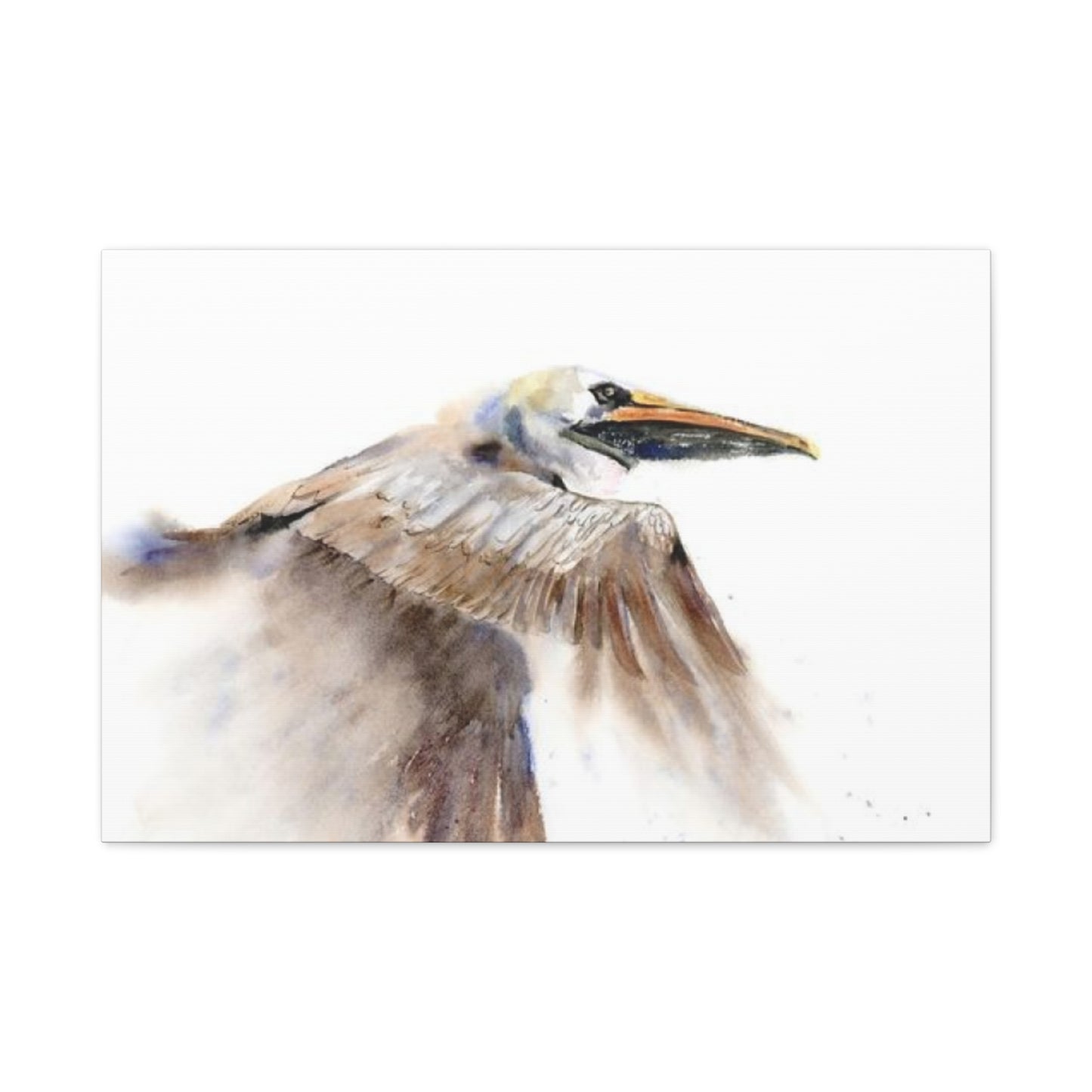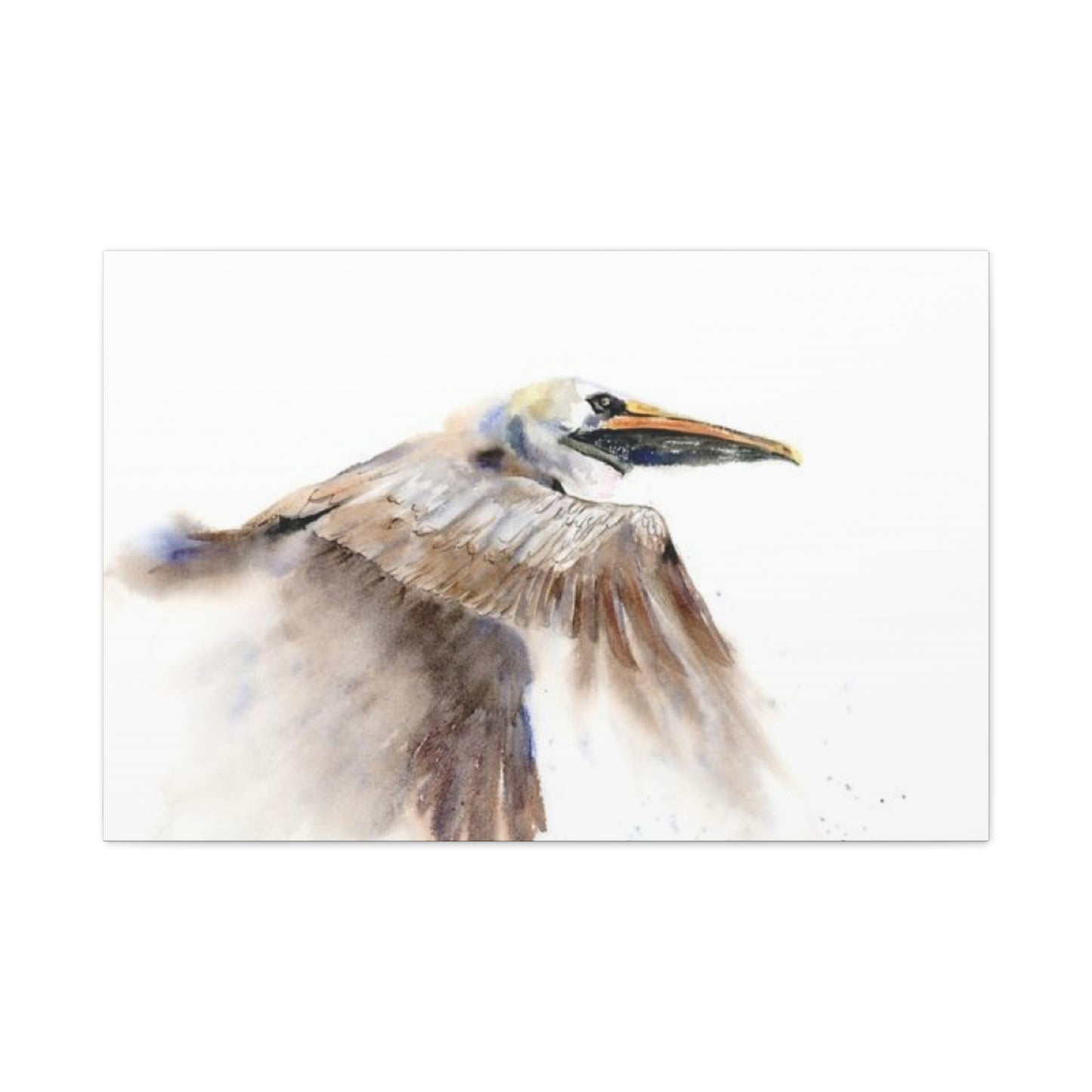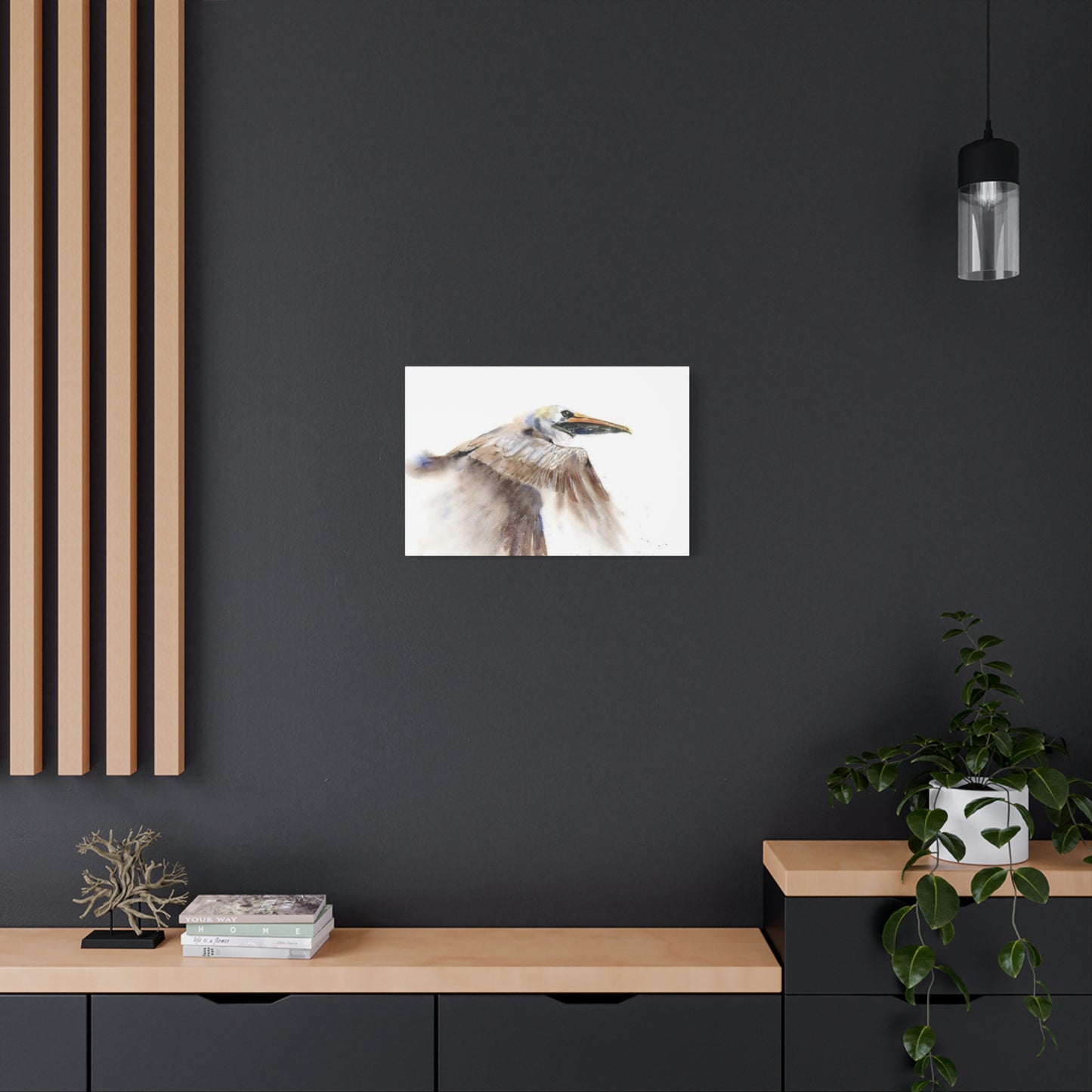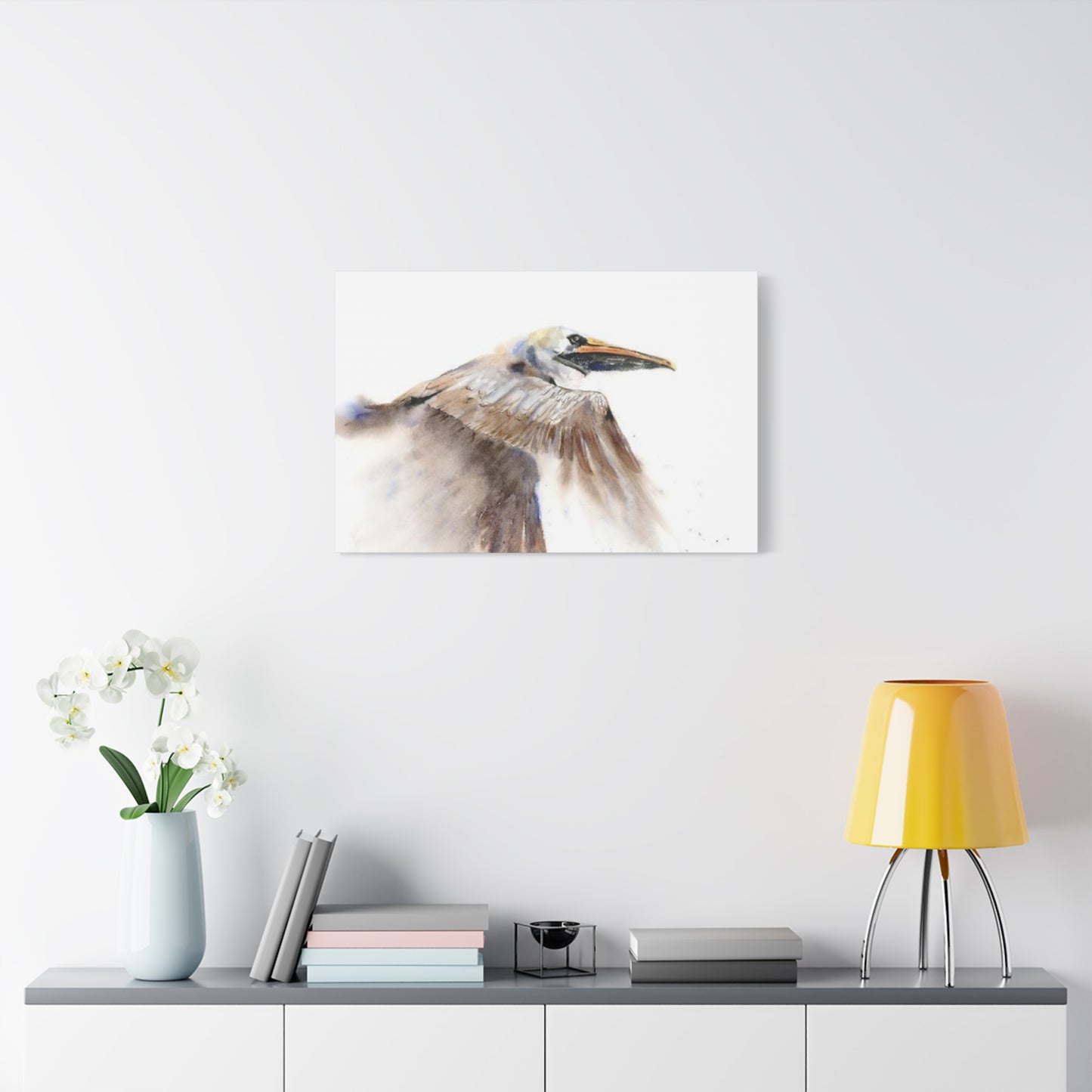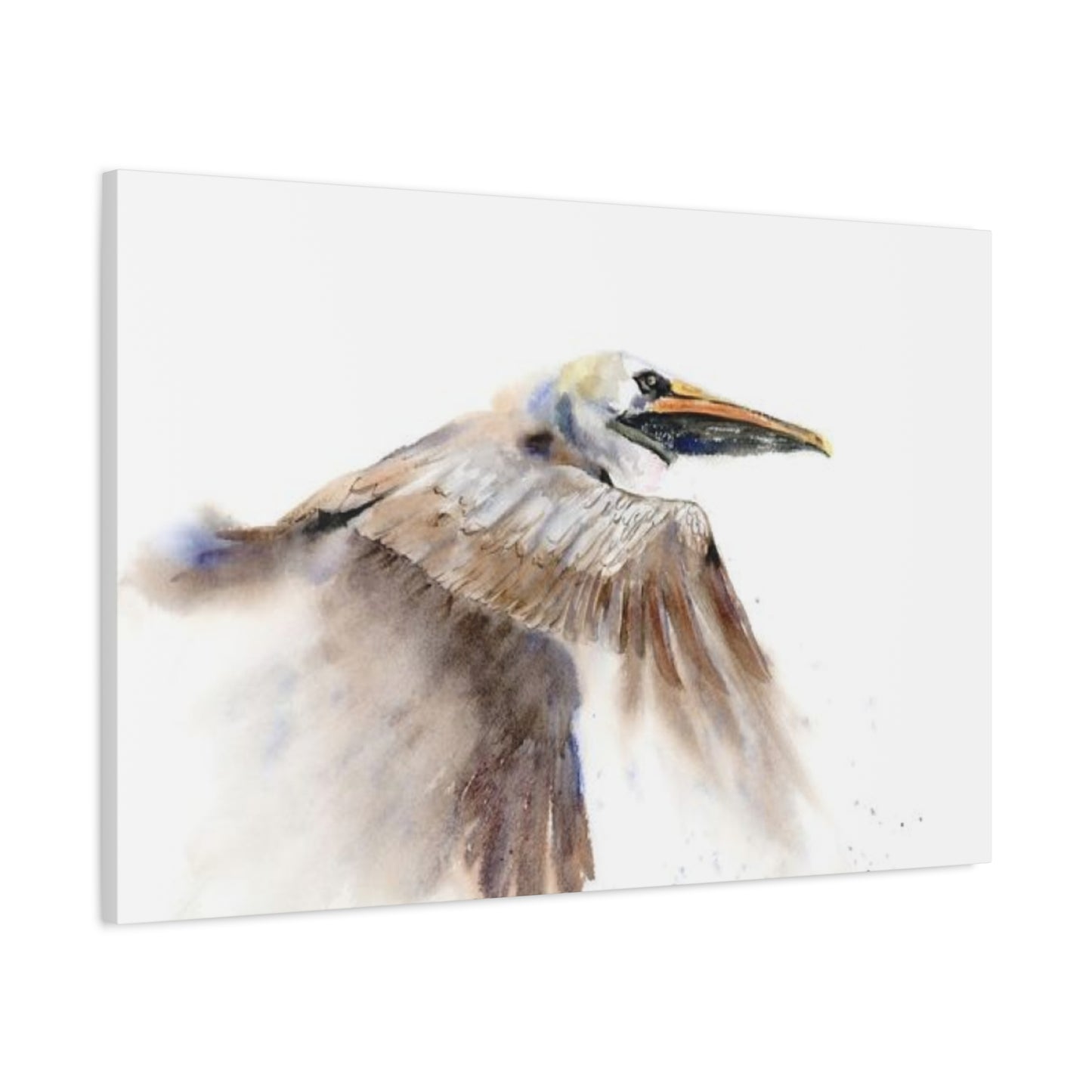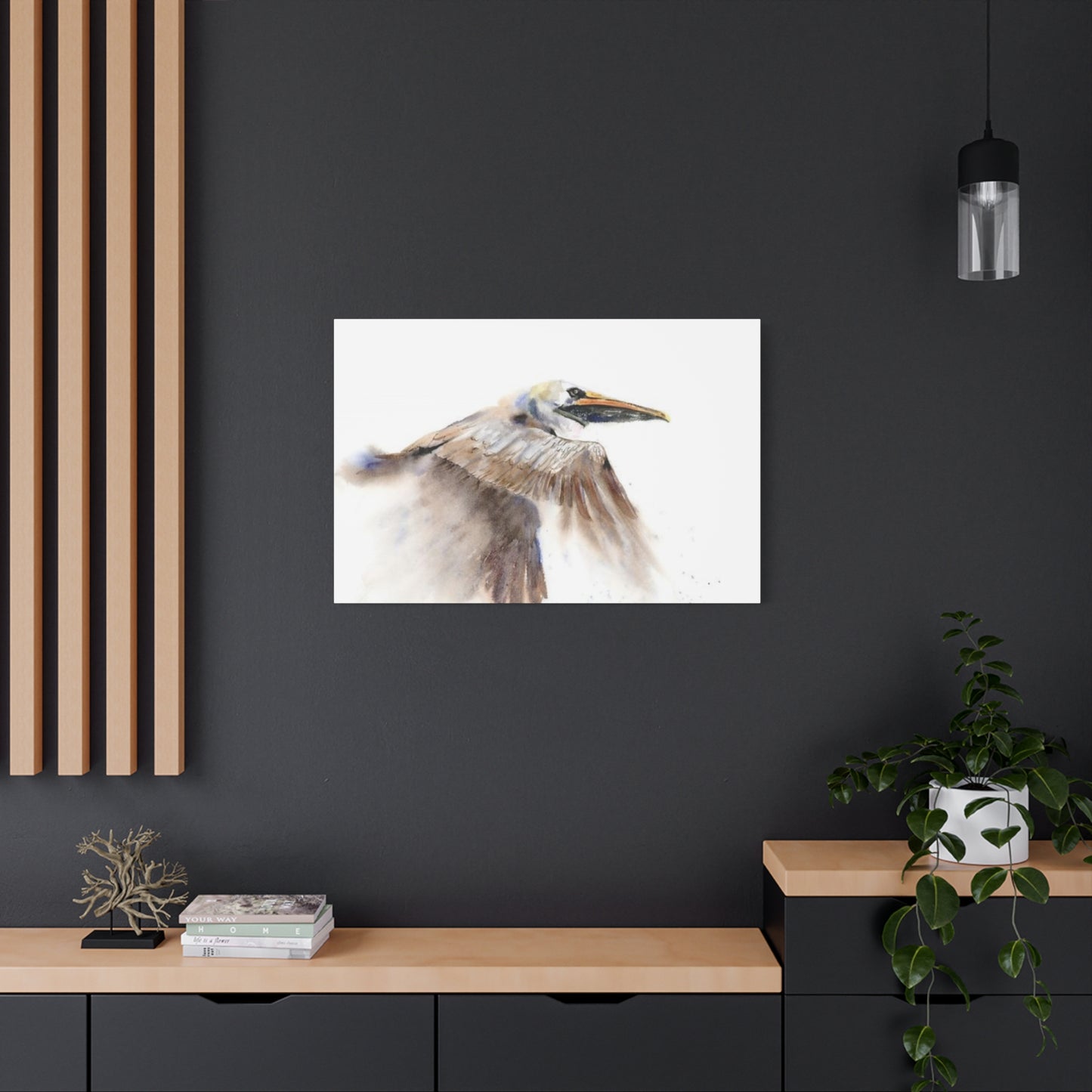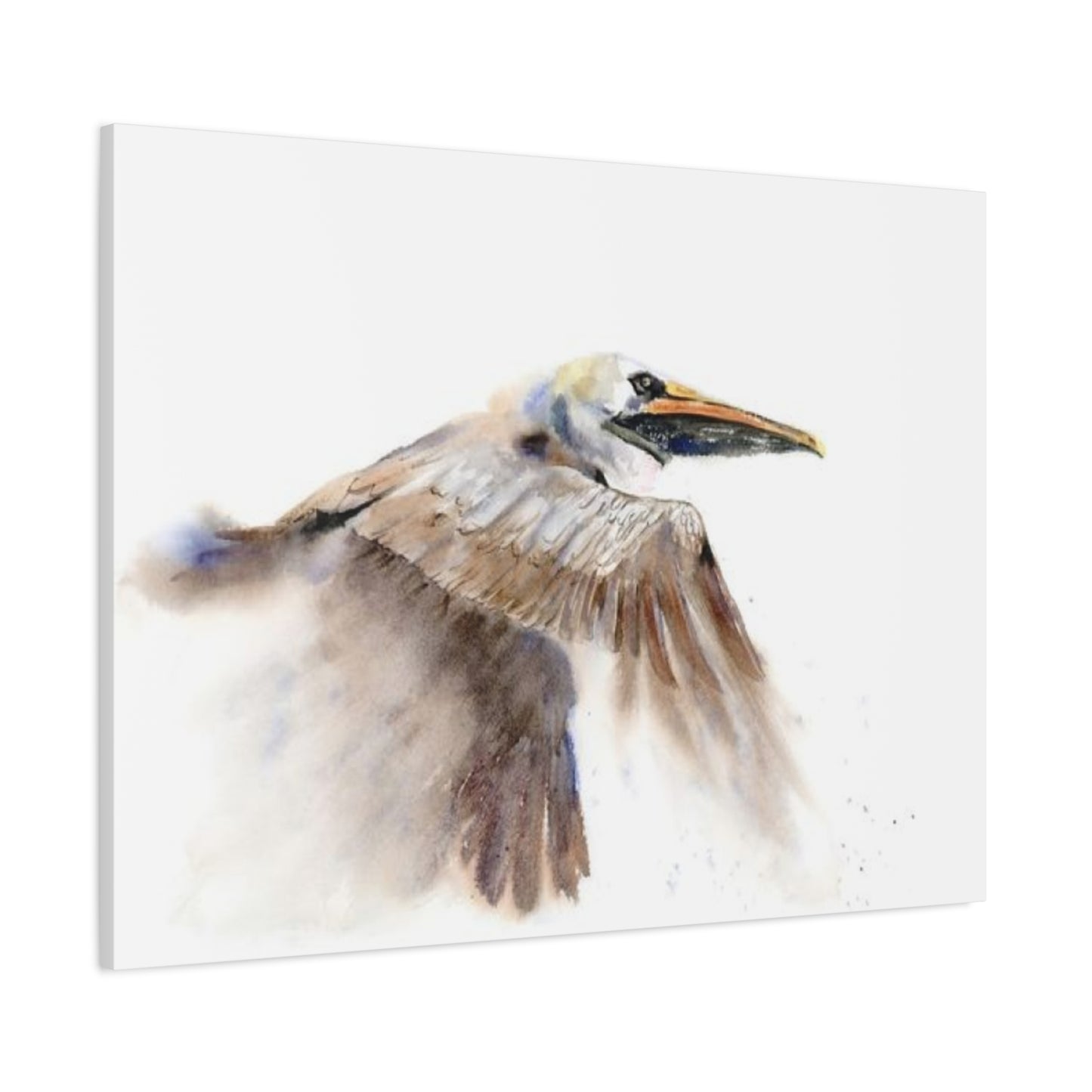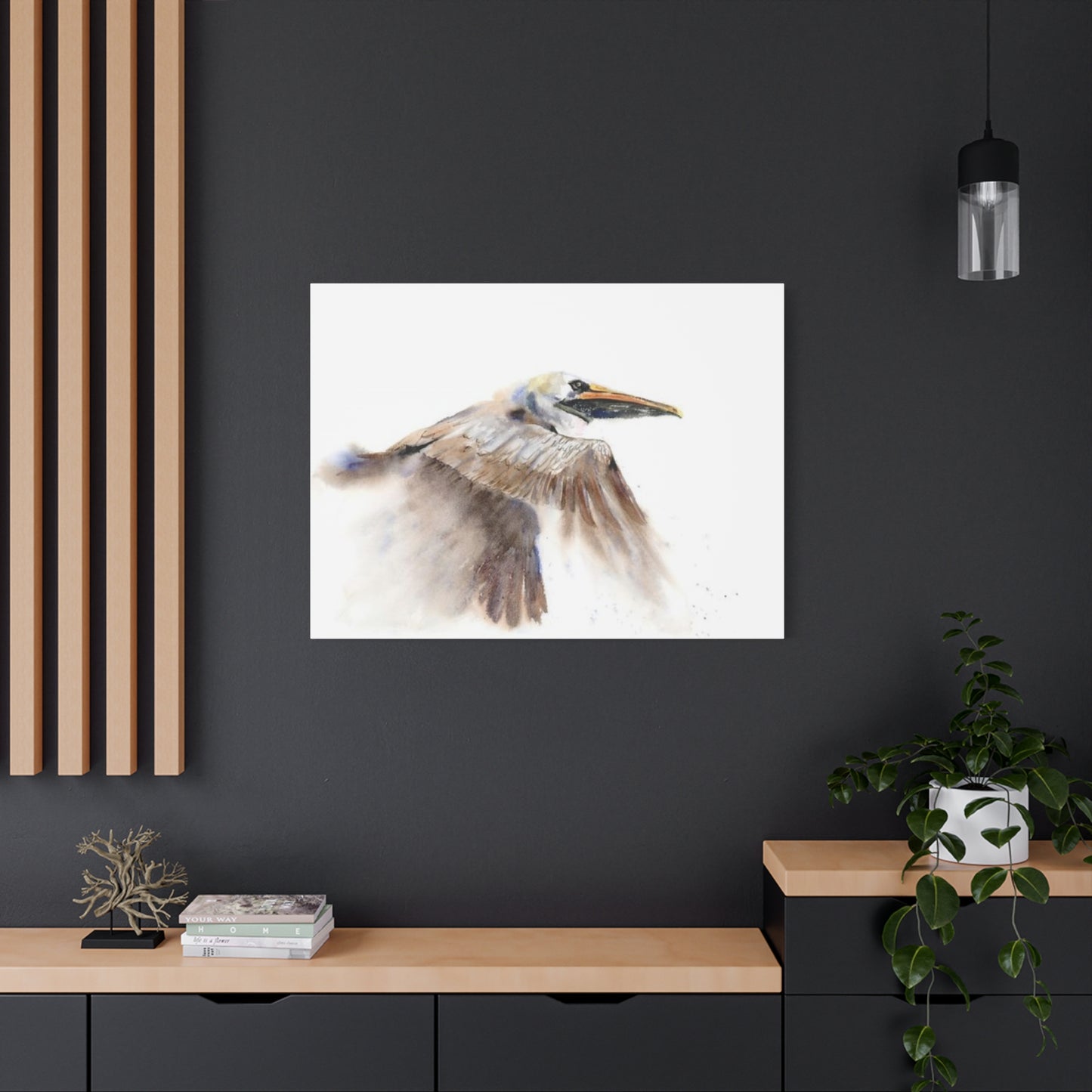Soaring Elegance: Flying Pelican Wall Art for Serene Home Environments
Creating a tranquil and visually appealing home environment has become increasingly important in today's fast-paced world. Among the various decorative elements that can transform any room, pelican wall art stands out as a particularly captivating choice that brings together natural beauty, symbolic meaning, and artistic expression. These magnificent birds, captured in their most graceful moments of flight, offer homeowners an opportunity to infuse their living areas with a sense of serenity, freedom, and connection to nature.
The appeal of flying pelican artwork extends far beyond mere decoration. These pieces serve as windows into the natural world, reminding us of the beauty and majesty that exists in wildlife. Whether rendered in realistic detail or interpreted through abstract artistic vision, pelican imagery has the power to transform ordinary walls into focal points that inspire contemplation and conversation. The gentle curves of their wings, the elegant lines of their bodies in motion, and their association with coastal environments make them ideal subjects for those seeking to create peaceful, nature-inspired living areas.
Modern homeowners are increasingly drawn to artwork that tells a story and evokes emotion, rather than simply filling empty wall areas. Pelican wall art accomplishes this beautifully by bringing the essence of freedom, grace, and natural wisdom into domestic environments. These birds have long been revered across cultures for their symbolic significance, representing everything from renewal and sacrifice to protection and community spirit. When incorporated thoughtfully into home decor, pelican imagery can serve as daily reminders of these positive qualities while adding sophisticated aesthetic appeal to any room.
The versatility of pelican-themed artwork makes it suitable for a wide range of decorative styles and preferences. From minimalist modern homes that benefit from the clean lines and elegant silhouettes of flying pelicans to more traditional settings where detailed, realistic portrayals can complement classic furnishings, these pieces adapt beautifully to various design philosophies. The key lies in selecting the right style, size, and placement to enhance the existing character of each room while creating the desired atmospheric effect.
Grace in Flight: Pelican Wall Art
The concept of grace in flight is perhaps nowhere more beautifully embodied than in the majestic movement of pelicans soaring through coastal skies. These remarkable birds demonstrate an effortless elegance that has captivated artists and nature enthusiasts for generations. When translated into wall art, this grace becomes a permanent fixture that can transform the energy and atmosphere of any room. The flowing lines and graceful curves of a pelican in flight create a sense of movement and freedom that static decorative elements simply cannot match.
Flying pelican artwork captures more than just the physical appearance of these birds; it preserves the essence of their movement through artistic interpretation. The way light plays across their wings, the subtle variations in their positioning, and the inherent poetry of their flight patterns all contribute to creating pieces that are both visually stunning and emotionally resonant. Artists who specialize in pelican imagery often spend considerable time observing these birds in their natural habitats, studying the nuances of their flight to accurately portray the grace and beauty that makes them such compelling subjects.
The artistic representation of pelicans in flight varies considerably depending on the artist's style and medium. Watercolor interpretations tend to emphasize the fluid, flowing nature of their movement, with soft edges and gentle color transitions that mirror the atmospheric quality of coastal environments. Oil paintings, on the other hand, can capture the more dramatic aspects of their flight, with rich textures and bold contrasts that bring depth and dimension to the artwork. Digital art and photography offer their own unique perspectives, sometimes combining multiple exposures or using advanced techniques to create stunning visual effects that highlight the bird's natural grace.
One of the most compelling aspects of pelican flight art is its ability to convey a sense of freedom and escape. In our increasingly urbanized world, many people yearn for connection with nature and the sense of liberation that comes from wide open spaces. Pelican wall art serves as a visual reminder of these feelings, allowing viewers to experience a momentary sense of freedom even while indoors. The expansive wingspans and soaring postures of these birds naturally draw the eye upward and outward, creating an illusion of expanded surroundings that can make even modest rooms feel more spacious and open.
The technical aspects of creating compelling pelican flight art require careful attention to anatomical accuracy, movement dynamics, and compositional balance. Artists must understand not only the physical structure of these birds but also the mechanics of their flight patterns. Pelicans are known for their distinctive flying formations, often gliding in long lines just above the water's surface, and this behavior provides rich material for artistic interpretation. The challenge lies in capturing both the individual beauty of each bird and the collective harmony they display when flying together.
Color selection plays a crucial role in the effectiveness of pelican flight artwork. While these birds are naturally white or brown depending on the species, artists often take creative liberties with coloration to enhance the emotional impact of their work. Subtle blues and grays can evoke the atmospheric quality of coastal environments, while warmer earth tones might emphasize the connection to natural habitats. Some contemporary artists experiment with more vibrant color palettes, using unexpected hues to create modern interpretations that challenge traditional expectations while maintaining the essential grace of their subjects.
The emotional impact of pelican flight art extends beyond its visual appeal. These pieces often serve as meditation focal points, with the rhythmic patterns of flight and the serene expressions of the birds creating a calming influence on viewers. Many people find that spending time contemplating pelican artwork helps reduce stress and anxiety, providing a mental escape to peaceful coastal environments. This therapeutic quality makes such pieces particularly valuable in bedrooms, meditation rooms, or any area where relaxation and tranquility are desired.
Symbolism of Pelicans in Art
Throughout history, pelicans have held profound symbolic meaning across diverse cultures and artistic traditions. Their representation in art extends far beyond mere aesthetic appreciation, delving into deep spiritual and metaphorical significance that continues to resonate with contemporary audiences. The pelican's unique behaviors and characteristics have made it a powerful symbol in religious art, folklore, and modern decorative pieces, each interpretation adding layers of meaning that enrich the viewer's experience.
In Christian symbolism, the pelican holds a particularly revered position, often representing sacrifice, devotion, and nurturing love. Medieval legends spoke of pelicans piercing their own breasts to feed their young with their blood during times of famine, creating a powerful metaphor for Christ's sacrifice for humanity. This symbolism appears frequently in religious art, stained glass windows, and ecclesiastical decorations, where the pelican serves as a reminder of selfless love and ultimate sacrifice. Modern interpretations of this symbolism have evolved to represent parental devotion and the lengths to which individuals will go to care for those they love.
The pelican's impressive fishing abilities have also contributed to its symbolic significance, representing abundance, provision, and trust in natural processes. In many coastal cultures, pelicans are viewed as symbols of prosperity and good fortune, their presence indicating healthy marine ecosystems and abundant fishing grounds. This symbolism translates beautifully into home decor, where pelican artwork can serve as a reminder of abundance and trust in life's natural flow. The bird's patient hunting style, often involving long periods of observation followed by precise action, has made it a symbol of wisdom, patience, and the importance of timing in achieving success.
Native American traditions have long honored the pelican as a symbol of community and cooperation. These birds' tendency to fish and fly in coordinated groups demonstrates the power of working together toward common goals. In tribal artwork and storytelling, pelicans often represent the importance of community support, shared resources, and collective wisdom. This symbolism remains relevant in contemporary settings, where pelican art can serve as a reminder of the value of cooperation and mutual support in both personal and professional relationships.
The pelican's connection to water and air elements makes it a symbol of emotional balance and spiritual transcendence in many artistic traditions. Water represents the realm of emotions, intuition, and the subconscious mind, while air symbolizes thought, communication, and spiritual aspiration. Pelicans, equally at home in both elements, serve as bridges between these realms, representing the integration of emotional wisdom and intellectual understanding. This duality makes pelican artwork particularly appealing to those seeking to create balanced, harmonious living environments.
In ancient Egyptian culture, pelicans were associated with the afterlife and spiritual transformation. Their ability to soar high above earthly concerns while remaining connected to the life-giving waters below made them symbols of souls transitioning between earthly and spiritual realms. This symbolism appears in various forms of Egyptian art, from tomb paintings to ceremonial objects, and continues to influence contemporary spiritual and metaphysical artwork featuring pelican imagery.
Modern psychological interpretations of pelican symbolism focus on themes of emotional nurturing, protective instincts, and the balance between giving and receiving. The bird's distinctive pouch is seen as representing the capacity to hold and process emotions, while its graceful flight symbolizes the ability to rise above emotional turbulence. These interpretations make pelican artwork particularly meaningful for those working through emotional healing or seeking to develop greater emotional intelligence and resilience.
The pelican's longevity and mate loyalty have also contributed to its symbolic significance in relationships and commitment. These birds often form lifelong partnerships and can live for several decades, making them symbols of enduring love, faithfulness, and the rewards of long-term commitment. Couples often choose pelican artwork for their homes as a representation of their own commitment to building lasting, supportive relationships based on mutual care and devotion.
Environmental symbolism associated with pelicans has become increasingly important in contemporary art and decor. As coastal ecosystems face mounting pressures from climate change and human development, pelicans serve as symbols of environmental awareness, conservation, and the interconnectedness of all life. Displaying pelican artwork can represent a commitment to environmental stewardship and awareness of our responsibility to protect the natural world for future generations.
Popular Styles of Flying Pelican Prints
The world of flying pelican prints encompasses a remarkable diversity of artistic styles, each offering unique aesthetic qualities and emotional impacts that cater to different design preferences and home environments. From photorealistic renderings that capture every feather detail to abstract interpretations that focus on movement and emotion, the variety of available styles ensures that every homeowner can find pelican artwork that perfectly complements their personal taste and existing decor.
Photorealistic pelican prints represent one of the most popular categories, appealing to nature lovers and those who appreciate fine detail in their artwork. These pieces often result from high-resolution photography or extremely detailed paintings that showcase the intricate beauty of pelican feathers, the subtle variations in coloring, and the precise mechanics of flight. Advanced printing techniques allow these images to be reproduced with stunning clarity, preserving the finest details that make each piece a window into the natural world. Such prints work particularly well in traditional settings where attention to natural detail is valued and appreciated.
Watercolor-style pelican prints offer a softer, more atmospheric approach that emphasizes the fluid nature of both the medium and the subject matter. The translucent qualities of watercolor naturally complement the grace and lightness of pelican flight, creating pieces that seem to capture not just the image but the very essence of movement through air. These prints often feature gentle color washes, soft edges, and the characteristic unpredictability of watercolor that adds organic spontaneity to the artwork. They work beautifully in casual, comfortable settings where relaxation and tranquility are prioritized.
Contemporary abstract interpretations of flying pelicans push the boundaries of traditional representation while maintaining the essential character that makes these birds recognizable. These pieces might focus on the geometric patterns created by wingspans, the rhythmic lines of flight formations, or the emotional resonance of freedom and movement rather than literal representation. Bold colors, unexpected compositions, and innovative techniques characterize this style, making these prints ideal for modern homes that value artistic innovation and creative expression.
Minimalist pelican prints strip away unnecessary details to focus on the essential elements that define these birds in flight. Simple line drawings, silhouettes, or stark black and white compositions can be surprisingly powerful, proving that sometimes less truly is more. These pieces rely on the viewer's imagination to fill in details, creating an interactive experience that engages the mind while providing clean, uncluttered visual elements that complement contemporary design philosophies.
Vintage-inspired pelican prints draw from historical artistic traditions while adapting them for contemporary use. These might include reproductions of classic Audubon-style illustrations, nautical chart-inspired designs, or pieces that mimic the aesthetic of old travel posters featuring coastal destinations. The nostalgic quality of these prints appeals to those who appreciate the charm of bygone eras while wanting to incorporate timeless natural themes into their homes.
Mixed media approaches combine various artistic techniques and materials to create unique pelican prints that offer textural interest and visual complexity. These might incorporate photography with painted elements, digital art with traditional printmaking techniques, or collage elements that add depth and dimension to the finished piece. The result is often artwork that invites closer inspection and reveals new details upon repeated viewing.
Impressionistic pelican prints focus on capturing the feeling and atmosphere of pelican flight rather than precise details. Loose brushstrokes, vibrant colors, and emphasis on light and movement characterize this style, creating pieces that evoke the emotional experience of watching pelicans soar rather than simply documenting their appearance. These prints work well in settings where mood and atmosphere are more important than literal representation.
Pop art interpretations of pelican imagery bring contemporary culture and bold aesthetic choices to traditional nature subjects. Bright colors, repeated images, and graphic design elements transform familiar pelican silhouettes into modern artistic statements that can serve as focal points in contemporary homes. These pieces often incorporate elements of commercial design, making them particularly suitable for urban environments and modern lifestyle settings.
Sepia and monochromatic pelican prints offer timeless elegance that transcends temporary design trends. The absence of color forces viewers to focus on composition, form, and the intrinsic beauty of the subject matter without distraction. These prints often have a classic, museum-quality appearance that works well in sophisticated settings where understated elegance is preferred.
Three-dimensional printing techniques have opened new possibilities for pelican artwork, creating pieces that extend beyond the traditional flat print format. Embossed prints, layered compositions, and textured surfaces add tactile elements that engage multiple senses and create dynamic visual effects as lighting conditions change throughout the day. These innovative approaches represent the cutting edge of contemporary print art and appeal to those who value technological advancement in artistic expression.
Using Pelican Art in Coastal Decor
Coastal decorating themes have gained tremendous popularity among homeowners seeking to create relaxing, vacation-like atmospheres in their daily living environments. Pelican art serves as an ideal cornerstone for such themes, bringing authentic maritime character while avoiding the clichés that often plague coastal decor attempts. The natural association between pelicans and coastal environments makes them perfect ambassadors for this decorating style, providing both visual appeal and thematic coherence that ties together various design elements.
The key to successfully incorporating pelican art into coastal decor lies in understanding the broader aesthetic goals of this design philosophy. Coastal decorating aims to capture the relaxed, breezy feeling of seaside living through the use of natural materials, ocean-inspired colors, and imagery that evokes the rhythms of coastal life. Pelican artwork naturally supports these goals by introducing elements that speak to the freedom, tranquility, and natural beauty associated with maritime environments.
Color coordination plays a crucial role when integrating pelican art into coastal decorating schemes. The natural coloring of pelicans—whites, grays, and browns—harmonizes beautifully with the typical coastal palette of blues, sand tones, and weathered whites. This natural compatibility allows pelican artwork to blend seamlessly with other coastal elements such as driftwood furniture, sea glass accessories, and rope details. However, the artistic interpretation of pelican imagery can expand this color palette to include the full range of ocean and sky hues, from deep navy blues to soft coral pinks.
Texture consideration becomes particularly important when using pelican art in coastal settings. The coastal aesthetic emphasizes natural, weathered textures that suggest the effects of salt air and ocean spray. Pelican prints on canvas can be enhanced with texture gels or specialized printing techniques that add dimensional quality reminiscent of weathered surfaces. Similarly, framing choices should reflect the casual, natural quality of coastal living, with options like driftwood frames, rope details, or weathered metal finishes that complement rather than compete with the artwork.
Scale and proportion considerations help ensure that pelican art enhances rather than overwhelms coastal decorating schemes. Large-format pieces can serve as dramatic focal points in spacious rooms with high ceilings, mimicking the expansive feeling of open coastal skies. Smaller pieces work well in groupings that suggest flocks in flight or can be used to create gallery walls that tell the story of coastal life through various perspectives and artistic interpretations.
The placement of pelican art within coastal-themed rooms requires thoughtful consideration of natural viewing patterns and the way people move through and use the environment. In living areas, pelican artwork placed above seating areas can create conversation focal points while maintaining the relaxed atmosphere essential to coastal decorating. Hallways and transitional areas benefit from series or sequences of pelican prints that create the impression of movement and journey, essential themes in coastal living.
Lighting considerations become particularly important when showcasing pelican art in coastal environments. Natural light, when available, should be maximized to highlight the natural themes and create the bright, airy feeling associated with coastal living. However, artificial lighting should be carefully planned to avoid harsh contrasts that might disrupt the serene atmosphere. Soft, diffused lighting that mimics the quality of light near water bodies works best for highlighting pelican artwork while maintaining the desired ambiance.
Complementary decorative elements should support and enhance the pelican artwork without creating visual competition. Natural materials like rope, shells, driftwood, and sea glass can be incorporated into displays that surround pelican art, creating vignettes that tell cohesive stories about coastal life. However, restraint is important to avoid cluttered appearances that detract from the clean, unencumbered feeling that characterizes successful coastal decorating.
Seasonal considerations allow pelican art to remain relevant and interesting throughout the year in coastal-themed environments. During warmer months, the artwork might be surrounded by lighter accessories and brighter accents that emphasize the active, outdoor aspects of coastal living. Winter months might call for warmer accent colors and cozier textures that maintain the coastal theme while acknowledging the need for comfort during less hospitable weather.
The psychological impact of pelican art in coastal decorating should not be underestimated. These pieces serve as constant reminders of the peace and freedom associated with coastal environments, helping to maintain the relaxed, vacation-like atmosphere that makes coastal decorating so appealing. The sight of pelicans in flight can trigger positive associations with memorable coastal experiences, making the home environment a retreat from daily stress and urban pressures.
Abstract vs Realistic Pelican Paintings
The artistic interpretation of pelican imagery spans a broad spectrum from photorealistic representations to highly abstract interpretations, each approach offering distinct advantages and appeal to different aesthetic preferences. Understanding the differences between abstract and realistic pelican paintings helps homeowners make informed decisions about which style best serves their decorating goals and personal taste while creating the desired atmospheric impact in their living environments.
Realistic pelican paintings prioritize accuracy, detail, and faithful representation of these magnificent birds in their natural state. Artists working in this style spend considerable time studying pelican anatomy, behavior, and habitat to create works that could serve as scientific illustrations while maintaining strong artistic merit. Every feather is carefully rendered, color variations are precisely matched to natural specimens, and proportions reflect actual bird measurements. The technical skill required for such work often results in pieces that command respect for both their artistic and scientific accuracy.
The appeal of realistic pelican paintings lies in their ability to bring viewers into intimate contact with these birds in ways that casual observation might not permit. Fine details of feather structure, the subtle play of light across wing surfaces, and the precise mechanics of flight become visible and appreciable through the artist's careful attention to natural phenomena. These paintings often serve educational purposes alongside their decorative function, helping viewers develop deeper appreciation for the complexity and beauty of pelican physiology and behavior.
Realistic pelican artwork works particularly well in settings where natural history appreciation is valued, such as libraries, studies, or homes of nature enthusiasts who prefer authenticity over artistic interpretation. The detailed nature of such pieces rewards close examination and can serve as conversation starters about wildlife, conservation, or artistic technique. However, the high level of detail can sometimes feel overwhelming in minimalist or contemporary settings where simpler visual elements are preferred.
Abstract pelican paintings take artistic license with natural appearance to explore deeper themes, emotions, or artistic concepts while maintaining recognizable elements that identify the subject as pelican-related. These works might emphasize the flowing lines of flight, the rhythmic patterns of wing movement, or the emotional impact of freedom and grace through color, composition, and gestural brushwork rather than literal representation. The artist's personal vision becomes more prominent than scientific accuracy in these interpretations.
The freedom inherent in abstract approaches allows artists to explore pelican themes through various stylistic lenses, from geometric interpretations that reduce the birds to essential shapes and patterns to expressionistic approaches that emphasize emotional content over visual accuracy. Color choices become more flexible, allowing for symbolic or purely aesthetic decisions that might incorporate hues never seen in actual pelicans but that serve the artist's conceptual goals or complement specific decorative environments.
Abstract pelican paintings often work better in contemporary settings where artistic innovation and personal expression are valued over traditional representation. These pieces can serve as sophisticated decorative elements that provide visual interest without demanding the detailed attention that realistic works might require. The interpretive nature of abstract art allows viewers to bring their own experiences and emotions to the viewing process, creating more personal connections with the artwork.
The emotional impact differs significantly between abstract and realistic approaches to pelican imagery. Realistic paintings might evoke wonder at the complexity and beauty of natural creation, inspiring feelings of reverence for wildlife and the natural world. Abstract interpretations might focus more on the feelings associated with flight, freedom, and grace, using the pelican as a vehicle for exploring broader human experiences and emotions.
Compositional considerations vary considerably between the two approaches. Realistic pelican paintings must work within the constraints of natural appearance, though artistic composition principles still apply in terms of lighting, background treatment, and overall design. Abstract works have greater flexibility in composition, allowing for experimental arrangements, multiple perspectives, or combination of temporal elements that would be impossible in realistic representation.
The longevity and timelessness of each approach offers different considerations for homeowners choosing pelican artwork. Realistic paintings often have enduring appeal because they connect with fundamental human appreciation for natural beauty and accuracy. However, they might also become dated if artistic styles or color preferences change. Abstract works might feel more contemporary initially but could also prove more timeless if they successfully capture universal themes and emotions rather than following temporary artistic trends.
Cost considerations often differ between abstract and realistic pelican paintings, though this varies considerably based on the artist's reputation and skill level. Highly detailed realistic works require significant time investment and technical skill, potentially commanding higher prices. However, abstract works by renowned artists can be equally or more expensive based on the artist's reputation and the conceptual sophistication of the piece.
Market availability and selection also differ between these approaches. Realistic pelican paintings are often created by wildlife artists who specialize in natural subjects, while abstract interpretations might come from fine artists who work across various subject matters. This affects both the range of available styles and the venues where such work might be found, from wildlife art galleries to contemporary art shows.
Where to Hang Pelican Wall Art
The strategic placement of pelican wall art significantly influences both its visual impact and the overall atmosphere it creates within a home environment. Proper positioning takes into account factors such as lighting conditions, room function, viewing angles, and the interaction between the artwork and existing architectural features. Understanding these considerations helps homeowners maximize the decorative and emotional benefits of their pelican art investments while creating harmonious, well-designed living environments.
Living rooms represent prime locations for pelican wall art due to their central role in home entertainment and daily family life. The main seating area provides an ideal focal point opportunity where large-scale pelican pieces can command attention without overwhelming the room's functionality. Above a sofa or fireplace mantel, pelican art creates conversation focal points while contributing to the room's overall aesthetic theme. However, height placement is crucial - artwork should be positioned so that the center of the piece sits at approximately 57-60 inches from the floor, or slightly lower if the seating area has low furniture.
Dining areas offer unique opportunities for pelican art placement that can enhance the dining experience through appropriate thematic connections. The peaceful, graceful qualities associated with pelican imagery can contribute to relaxed, pleasant meal environments that encourage conversation and enjoyment. Side walls or the area behind a buffet or serving table work well for medium-sized pieces, while larger dining rooms might accommodate substantial pelican artwork that serves as the room's primary decorative element.
Bedroom placement of pelican art should emphasize the calming, peaceful qualities that these birds represent, supporting restful sleep and relaxation. The wall opposite the bed creates a pleasant view upon waking, while positioning art above the headboard requires careful consideration of scale to avoid overwhelming the sleeping area. Smaller, more intimate pelican pieces work well in bedrooms, where quiet contemplation and personal reflection are more important than dramatic visual impact.
Hallways and entryways present interesting challenges and opportunities for pelican art placement. These transitional areas benefit from artwork that creates a sense of movement and journey, making flying pelican imagery particularly appropriate. Series of smaller pieces can create gallery-style presentations that guide movement through the home while telling visual stories about coastal themes or natural beauty. However, hallway lighting can be challenging, requiring careful consideration of both natural and artificial light sources.
Bathroom placement might seem unconventional, but the connection between pelicans and water makes these areas surprisingly appropriate for such artwork. Smaller pieces that can withstand humid conditions work best, and proper framing becomes crucial to protect against moisture damage. The peaceful, cleansing associations with both water and pelican imagery can enhance the spa-like qualities that many homeowners seek in their bathroom environments.
Home offices and study areas can benefit from pelican art that supports concentration and creativity while providing periodic visual relief from work-related stress. The symbolism of patience, wisdom, and careful observation associated with pelican behavior makes these pieces particularly appropriate for work environments. Placement should be visible from the work area without creating distractions, often working best on walls that are in the peripheral vision rather than directly in the primary line of sight.
Kitchen placement requires practical considerations about cooking activities, steam, and frequent cleaning while recognizing the kitchen's role as a gathering place in many homes. Pelican art can contribute to a coastal or natural theme in kitchen environments, but placement should avoid areas directly above cooking surfaces where grease and steam might cause damage. Breakfast nook areas or walls adjacent to dining areas work well for smaller pelican pieces.
Stairway placement offers dramatic opportunities for larger pelican pieces or series that can be viewed from multiple levels and angles. The vertical space available in stairwells accommodates larger format artwork that might overwhelm smaller rooms, while the changing perspectives available at different levels create dynamic viewing experiences. However, lighting in stairway areas often requires special attention to ensure proper artwork illumination.
Ceiling height considerations affect both the size of appropriate pelican artwork and its placement relative to furniture and architectural features. Rooms with standard eight-foot ceilings require different approaches than those with cathedral ceilings or open beam construction. Higher ceilings can accommodate larger pieces and allow for more dramatic placement, while lower ceilings might benefit from horizontal format pieces that complement rather than compete with the architectural proportions.
Natural light patterns throughout the day influence how pelican art appears in different locations and at various times. South-facing walls receive consistent light that might fade artwork over time, while north-facing positions provide more stable, indirect light that preserves colors while still providing adequate illumination. East and west-facing positions create dramatic lighting changes throughout the day that can add interest but might also create viewing challenges during certain hours.
Artificial lighting design should complement and enhance pelican artwork while supporting the room's overall lighting needs. Track lighting, picture lights, or strategically placed table and floor lamps can highlight artwork while creating layered lighting schemes that support various activities and moods. The warm, cool, or neutral quality of light sources affects how colors appear in the artwork and should be considered when making both art selection and lighting decisions.
Pelican Art for Nature Lovers
Nature enthusiasts represent a particularly receptive audience for pelican artwork, as these pieces speak to deep-seated appreciation for wildlife, environmental beauty, and the intricate relationships between living creatures and their habitats. For those who find inspiration, solace, and joy in natural environments, pelican art serves as more than mere decoration—it becomes a bridge between their outdoor experiences and indoor living areas, maintaining connection with the natural world even during times when direct contact with nature is not possible.
The scientific accuracy and natural behavior depicted in quality pelican artwork resonates strongly with nature lovers who have likely spent time observing these birds in their natural habitats. Such viewers can appreciate subtle details that artists include, from the precise angle of wing positioning during different flight phases to the accurate representation of feeding behaviors and social interactions. This attention to authentic detail creates artwork that rewards the informed observation that nature lovers bring to their viewing experience.
Educational value becomes particularly important for nature enthusiasts who often enjoy learning new information about wildlife through their artwork. Pelican pieces that accurately portray different species, seasonal variations in appearance, or regional behavioral differences can serve as ongoing sources of information and discovery. Artists who include subtle details about habitat preferences, migration patterns, or conservation status add layers of meaning that enrich the viewing experience for knowledgeable audiences.
Conservation themes often appeal to nature lovers who are aware of environmental challenges facing pelican populations and coastal ecosystems generally. Artwork that celebrates the beauty and importance of these birds while subtly highlighting conservation needs can reinforce viewers' commitment to environmental stewardship. Pieces that show pelicans in pristine natural settings remind viewers of what is at stake in conservation efforts and why protecting these environments matters.
The seasonal aspects of pelican behavior and appearance offer nature lovers opportunities to connect their artwork with the natural rhythms that govern wildlife. Understanding when pelicans are most active, their breeding cycles, and migration patterns adds temporal dimensions to artwork appreciation that casual viewers might miss. This knowledge allows nature enthusiasts to experience their pelican art as dynamic representations that change meaning throughout the year based on what is happening in the natural world.
Habitat authenticity becomes crucial for nature lovers who can quickly identify inaccurate or generic backgrounds that fail to represent the specific environments where pelicans actually live and thrive. Artwork that accurately depicts coastal marshes, rocky shores, or open ocean environments demonstrates respect for ecological accuracy that knowledgeable viewers appreciate. This attention to habitat detail also helps maintain the educational value that many nature lovers seek in their decorative choices.
The behavioral accuracy shown in pelican flight patterns, feeding techniques, and social interactions provides nature enthusiasts with artwork that recalls their own field observations and experiences. Pieces that capture the distinctive formation flying that pelicans are known for, their spectacular diving feeding behavior, or their patient surface fishing techniques trigger memories of actual wildlife encounters and reinforce the emotional connections that drive nature appreciation.
Photography versus painted interpretations offers different appeals to nature lovers, with some preferring the documentary accuracy of high-quality wildlife photography while others appreciate the artistic interpretation that painting allows. Photographs can capture split-second behavioral moments that would be impossible to observe casually, while paintings can emphasize particular aspects of pelican beauty or behavior through artistic technique and style choices.
Regional species differences provide opportunities for nature lovers to select pelican artwork that reflects their local wildlife or represents areas they have visited and wish to remember. Brown pelicans of the Atlantic and Pacific coasts differ from white pelicans of interior regions, and knowledgeable viewers appreciate artwork that accurately represents the specific species they know and love. This regional connection adds personal meaning to artwork selection and display.
Field guide aesthetics appeal to some nature lovers who appreciate the clean, informative style of scientific illustration alongside more artistic interpretations. Pelican artwork that incorporates elements of field guide illustration—clear species identification features, accurate proportional relationships, or multiple pose views—can serve both decorative and reference functions for serious birders and wildlife enthusiasts.
The philosophical connections between pelican behavior and human values resonate with nature lovers who see lessons in wildlife observation. The patience that pelicans display while fishing, their cooperative behavior in group activities, and their adaptability to changing environmental conditions offer metaphors for human behavior that thoughtful nature enthusiasts appreciate in their artwork selections.
Binoculars and field equipment themes in pelican artwork speak to nature lovers' actual wildlife viewing experiences. Pieces that subtly reference the tools and techniques of wildlife observation create connections with the methods that nature enthusiasts use to pursue their interests. This adds authenticity and personal relevance that enhances the artwork's appeal to knowledgeable audiences.
Coastal Vibes with Flying Pelican Prints
Creating authentic coastal atmospheres in home environments requires careful attention to the visual elements that truly capture the essence of seaside living, and flying pelican prints offer one of the most effective ways to achieve this goal. These images naturally evoke the freedom, tranquility, and rhythmic beauty associated with coastal environments while avoiding the commercial clichés that often characterize attempts at beach-themed decorating. The inherent grace and natural coastal association of pelicans make them ideal ambassadors for bringing genuine maritime atmosphere into residential settings.
The movement quality inherent in flying pelican imagery perfectly captures the dynamic, ever-changing nature of coastal environments. Unlike static decorative elements that might reference the ocean through shells or nautical equipment, images of pelicans in flight convey the constant motion of sea breezes, shifting tides, and the endless dance between air and water that defines coastal living. This sense of movement adds vitality to indoor environments that stationary decorative elements simply cannot provide.
Color harmonies in flying pelican prints naturally complement the coastal palette without requiring forced coordination with typical beach-themed color schemes. The natural whites, grays, and browns of pelican plumage work beautifully with the blues, sandy beiges, and weathered whites that characterize authentic coastal decorating. However, artistic interpretation of pelican imagery can expand this palette to include the full spectrum of coastal colors, from the deep navy of storm clouds to the soft coral of sunset skies.
The atmospheric qualities that artists capture in pelican flight scenes often include the distinctive light conditions found in coastal environments. The clear, bright quality of ocean light, the soft haziness of sea mist, and the dramatic contrasts of coastal weather all contribute to the unique visual character of seaside living. Flying pelican prints that successfully capture these atmospheric conditions bring authentic coastal ambiance into homes regardless of their actual geographic location.
Seasonal variations in pelican imagery allow coastal-themed decorating to evolve throughout the year while maintaining thematic consistency. Summer interpretations might emphasize bright skies and active flight patterns, while winter versions could focus on the more subdued colors and contemplative moods associated with off-season coastal environments. This seasonal flexibility keeps coastal decorating fresh and responsive to changing light conditions and emotional needs throughout the annual cycle.
Scale considerations in flying pelican prints help create the sense of expansiveness that characterizes coastal environments. Large-format prints can suggest the vast skies and endless horizons that make coastal areas feel liberating and spacious. Smaller pieces might focus on intimate details that reward close observation, mirroring the way coastal environments offer both grand vistas and subtle discoveries for those who take time to look carefully.
Final Thoughts
Soaring Elegance: Flying Pelican Wall Art offers a graceful blend of tranquility, movement, and symbolism—making it an exceptional choice for creating serene home environments. As we reach the end of this journey through the beauty and meaning behind flying pelican artwork, it’s clear that these pieces bring more than visual appeal; they deliver a sense of calm, freedom, and quiet strength that can transform any living space.
The pelican, often seen gliding effortlessly across the sky or skimming just above the water, represents balance, grace, and resilience. In wall art, this majestic bird in flight becomes a powerful symbol of peace, perspective, and the ability to rise above life’s currents. Incorporating such imagery into your home infuses your space with a gentle energy that promotes mindfulness and well-being.
One of the defining features of flying pelican art is its ability to create an open and airy atmosphere. The visual composition—often featuring vast skies, coastal tones, and soft horizons—naturally opens up a room, making it feel more expansive and refreshing. Whether used as a large focal canvas in a living room or a subtle accent in a bedroom or hallway, pelican-themed art invites a sense of calm and spaciousness into your environment.
This artwork also offers impressive versatility. Its neutral, nature-inspired color palette complements a wide range of interior design styles—from coastal chic and minimalist modern to bohemian and Scandinavian-inspired spaces. Whether you live near the sea or simply dream of it, flying pelican art brings a taste of coastal serenity wherever it’s placed.
Additionally, Flying Pelican Wall Art can create a narrative in your home—one that connects you to the beauty of nature and the metaphor of flight. It’s a reminder to stay grounded while still seeking freedom and new horizons. The serene imagery encourages daily reflection and adds emotional depth to your surroundings.
Crafted with quality materials and often printed on durable, gallery-wrapped canvas, these artworks are not only stunning but built to last. Many collections offer various sizes and framing options, allowing for personalization to fit your space perfectly.
In conclusion, Soaring Elegance: Flying Pelican Wall Art is a thoughtful, artistic way to enhance your home with a sense of peace, beauty, and meaning. It elevates your space while quietly reminding you of the grace found in both nature and life’s quiet moments. For those looking to create a sanctuary filled with light, movement, and calm, flying pelican wall art is a perfect choice.


















